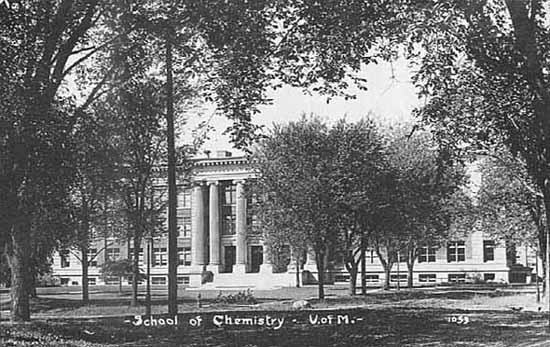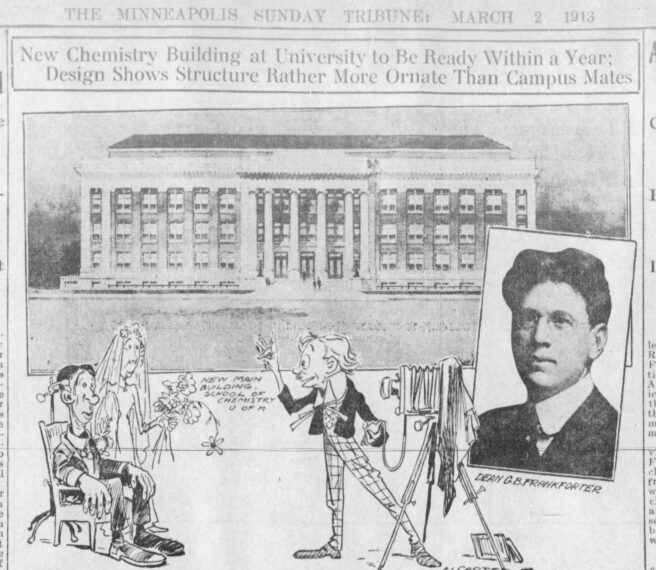Chemistry Building/Smith Hall University of Minnesota
Kraus-Anderson’s extensive history of constructing academic buildings can be traced back to one remarkable project: The University of Minnesota’s Chemistry Building of 1914.

The University of Minnesota Chemistry Building Set a New Milestone of J.L. Robinson
By 1914 J.L. Robinson had over a decade’s experience successfully completing large projects, but the Chemistry Building was a milestone for Robinson as a builder. Funded by the state legislature and designed by Clarence Johnston, the U of M’s new chemistry building was newsworthy from conception to completion.

Minnesota’s legislature required that, wherever feasible, local materials were to be used in the construction of their new chemical research facility. This laudable addendum to the project’s funding plan created unexpected challenges to the local construction industry. One contractor complained to the local newspaper that their bid included an unprecedented 280 alternate bids.

The University of Minnesota’s chemistry building was one of the most ambitious academic projects of its day. Upon completion, it contained the largest single laboratory in the world.

A Precious Glimpse into our Early Recorded History
The publicity surrounding the construction of chemistry building provides a key hole’s glimpse into KA’s deep past. Precious few of the company’s records have survived from 1914, but from newspaper accounts, we know that Frank Rushford and P.F. Jordan were the masons that placed the chemistry building’s cornerstone.
Several of the landmark buildings that J.L. Robinson built early in his career (Dayton’s building in downtown Minneapolis and the Deer and Webber warehouse for instance) have survived until today, but the University of Minnesota’s Chemistry building represents a rare achievement in that it has been used continuously for its intended purpose for 110 years.
CATEGORY: History